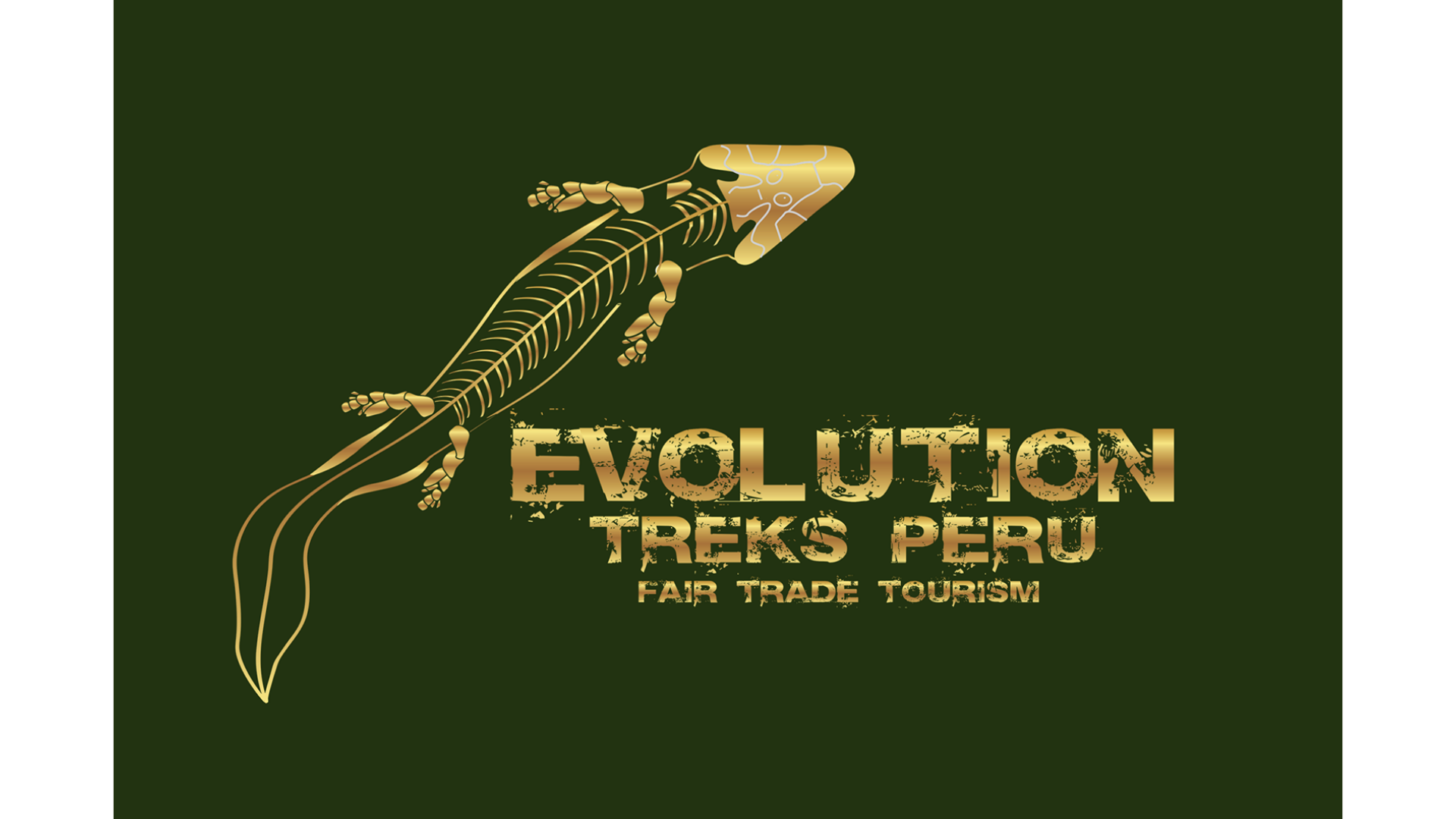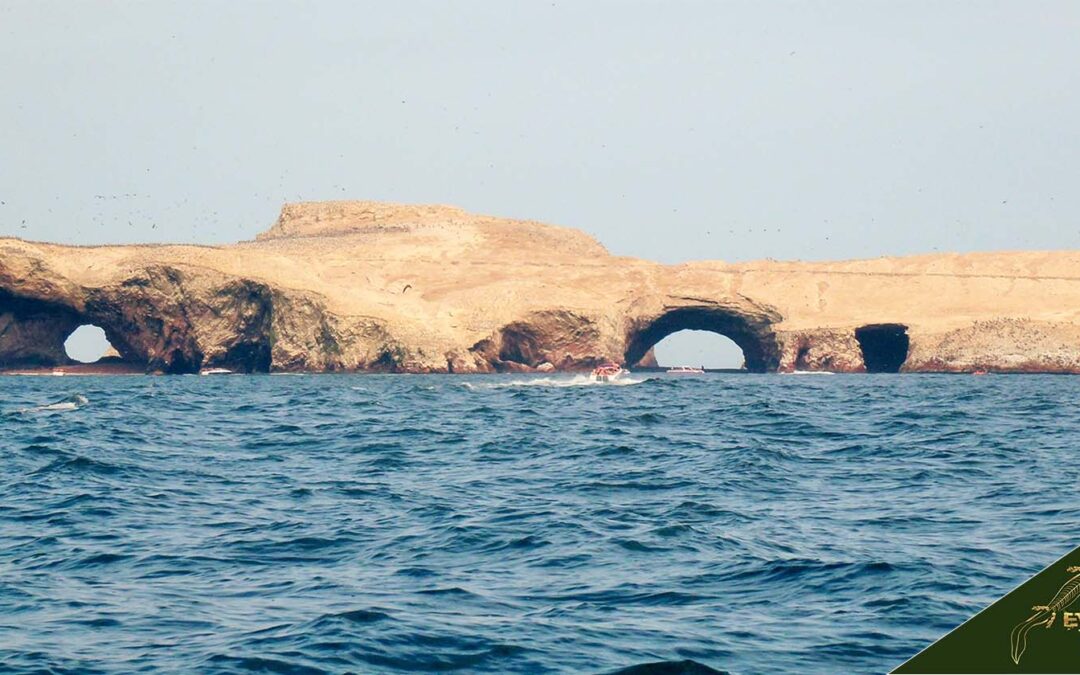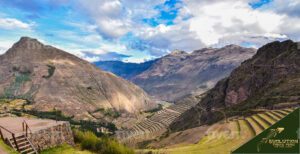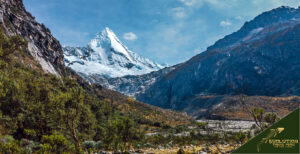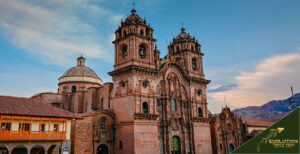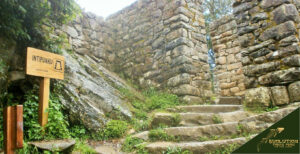The Ballestas Islands are a group of small rocky islands that are part of the National Reserve System of Islands, Islets, and Puntas Guaneras in the South Pacific Ocean in Peru. It is one of the 76 protected natural areas that constitute Peru’s National System of protected natural areas.
The Ballestas Islands are located in the Pacific Ocean off the coast of Peru, in front of the National Reserve of the district of Paracas, very close to the province of Pisco in the department of Ica. The islands are located about 260 km south of the city of Lima. The Ballestas Islands are located 7.7 km northwest of the Paracas peninsula, and 19 km as the crow flies from El Chaco, Paracas. To the north of Ballestas, at 8.2 km, are the Chincha islands and 10.17 km southwest of San Gallan island. It has three islands: Ballesta Centro, Ballesta Norte, and Ballesta Sur.
The Ballestas Islands are located south of the city of Lima in the department of Ica, also known as the Galapagos of the poor.
The Ballestas Islands are where various species, such as birds and mammals, are concentrated, such as the Humboldt penguin, the Peruvian penguin, sea lions, and dolphins. Tourists can visit this ecosystem by boat to avoid disturbing the animals’ habitat.
To get to the Ballestas Islands from Lima, you will have to take a bus or rent a car to the district of Paracas in the province of Pisco in the department of Ica. The distance from the city of Lima is 292 km. That is to say, 4 hours of trip approximately. Then, the trip to the Ballestas Islands starts from the El Chaco dock, located 19.7 km from the final destination. The time of the tour is 2 hours, and it is done in shifts of 8 a.m. and 10 a.m. because after 11 a.m., the tide rises, and the visit becomes complicated. The tour to the islands is done in boats or very safe boats.
The origin of the Ballestas Islands refers to the fact that they were ancient sailing routes. Archaeological artifacts from the Moche culture developed between 100 B.C. and 700 A.D. on the northern coast of Peru and the closest culture, Paracas. There is the iconography of sea lion hunting.
The Ballestas Islands have been a UNESCO World Heritage Site since 1994 for the diversity of their fauna, the presence of sea lions, and for being a place where birds and other species are concentrated.
The Ballestas Islands receive tourists yearly because they have a good climate. The first quarter of the year is the summer months on the Peruvian coast, the ideal time to visit this place. In the first six months of 2022, it has received more than 400,000 tourists. The Paracas Chamber of Tourism and Foreign Trade projects more than one million domestic and foreign tourists by 2023.
What is the history of Las Ballestas?
Pre-Hispanic period (1st to 16th century): This period marks the beginning of the history of the Ballestas Islands. Archaeological objects were found and rescued, even though the high intensity of guano extraction changed the islands’ surface. The objects found were from the Moche Culture between the first and eighth centuries A.D.
This culture extended along the northern coast of Peru; however, some archaeological pieces were found in the southern islands, demonstrating a development in navigation and cultural exchange between the northern and southern extremes. Wooden rods, textile fragments, sea lion sculptures in bone, and human remains were found. Scenes of navigation and human sacrifices on the islands represented the hunting of sea lions.
An interesting fact is that in the Larco Museum in the district of Pueblo Libre in Lima, a sculptural bottle shows a typical island scene with sea lions and boats. According to Anne-Marie Hocquenghem, in her book Mochica Iconography (1981), the islands were sacred places where sacrifices were made, as well as sea lion hunting and fishing activities.
There are relics of this culture in the Ballestas Islands and in the Chimú culture, where two sculptures representing local curacas were found, including a pitcher in the shape of a Peruvian hairless dog. This animal was part of the cult of the ancestors, which reaffirms that the islands were sacred.
The chronicler Garcilaso de la Vega and historian Maria Rostworowski add that the ancient Peruvians performed complex religious ceremonies oriented to fishing and going on pilgrimages from the north coast to the islands to worship.
Inca period (1438 – 1532): the Incas used the guano as the most effective natural fertilizer. Guano is the excrement of birds that accumulated in the birds’ roost. Hudtwalcker and Pinilla (2005) state that the islands were a collection area for products such as fish and seafood and for fertilizer such as guano. Archaeological evidence of offerings to ancestors, such as metal plates and containers, and the remains of women involved in textile activities for rituals were also found. The arrival of the Spanish changed all these activities.
Colonial Period (1532 – 1824)
Pedro Cieza de León, the Spanish conquistador and chronicler, states that there are islands full of sea lions. He even affirms that it was a place of human sacrifices and suspects the existence of treasures. Antonio de Herrera y Tordesillas, in his book Décadas, maintains that the islands are areas of guano used as fertilizer carried by the Indians from the area of sea lions.
After the miscegenation, indigenous traditions and beliefs disappeared, but the area’s fishermen maintained the guano extraction activity.
Republican period (from 1824 to the present day)
According to Hudtwalcker and Pinilla (2004), archeological excavations revealed remains of summer dwellings from the 18th and early 19th centuries. The islands were also a refuge for smugglers from England and the USA. In 1804, Alexander von Humboldt took some samples of Peruvian guano to Europe to be analyzed, resulting in an excellent fertilizer, more effective than the manure of other species.
In 1841, the large-scale exploitation of guano began due to the great international demand for the improvement of agricultural production. The guano era lasted from 1840 to 1870, producing high profits that allowed to pay the foreign debt produced by the Peruvian Independence.
In 1847, as a result of the guano exploitation work, a coat of arms was found inside the guano deposits, a common element among indigenous lords who supported the Spaniards during the conquest period. This object had among its drawings a guanay bird, which produces the so-called guano, and an image of the islands.
In 1865, Spain tried to collect a supposed debt caused by the expenses of the confrontations for emancipation. However, Peruvian sovereignty was official after the Combat of May 2nd, 1866.
In the 20th century, starting in the 1960s, non-intrusive tours to the Ballestas Islands began in Paracas and its surroundings. In the first decade of the 2000s, the Peruvian Navy conducted new research on land and underwater to discover historical traces of the island. Today, it is still an industry regulated by the Ministry of Agriculture. The Guano collection is carried out every 7 or 8 years. You can see the guano extraction facilities on the islands.
The Ballestas Islands are important for the history of Latin America because they have been areas of religious, commercial, and cultural activity since pre-Hispanic times through the Inca empire, the colonial period, and the republican stage, which has allowed us to know in greater detail the role played by civilizations.
What does Las Ballestas mean?
Las Ballestas, or ‘Crossbow Islands’, refers to an archipelago – a group of nearby islands shaped like a crossbow with rocks at its bows. The word “Ballesta” originates in the large stones carved due to the sea’s movements since prehistoric times, resembling an archer’s bow.
What civilization was in Las Ballestas, and for what purpose?
The Paracas culture, known for its textile art, irrigation system, and water management, was located in the region surrounding the Ballestas Islands in the department of Ica, province of Pisco. Julio C. Tello, a Peruvian archaeologist, investigated the discoveries of the Paracas culture.
The Ballestas Islands were also influenced by the Moche and Chimu cultures, belonging to the northern coast of Peru because the inhabitants of both cultures moved to the islands for religious ceremonies, worship of the dead, and human sacrifices; they also built rafts for navigation.
At the time of the Inca empire, the settlers came to the Ballestas Islands to fish and extract guano (bird droppings) as fertilizer.
What is the culture of Las Ballestas?
The pre-Hispanic Moche and Chimú cultures traveled by sea through the Ballestas Islands, and the Paracas culture of the city of Pisco, in the department of Ica, developed a civilization of religious activities, fish gathering, and extraction of bird excrement (guano).
What are the theories about the origin of Las Ballestas?
The islands are composed mostly of igneous rock, which suggests that their formation was likely due to volcanic activity in the past. It is believed that these eruptions created large masses of molten lava that eventually cooled down and solidified into basaltic rocks. Over time, these rocks were slowly eroded away by waves, thus forming the archipelago of islands we see today.
In addition to this theory, evidence suggests that the Ballestas Islands may have formed due to tectonic or seismic activity along the coast. This activity would have caused landmasses shifts and sea level changes over time. It is possible that some areas became submerged under water while others rose above it, creating small islands like those seen around Ballestas today.
Finally, some scientists theorize that at least some portion of Ballestas’ formation may be due to human activities over time such as fishing, mining and other activities related to extracting natural resources from the coasts of Peru. It is possible that humans have been using these resources for centuries and inadvertently created small islands off its coast through their actions.
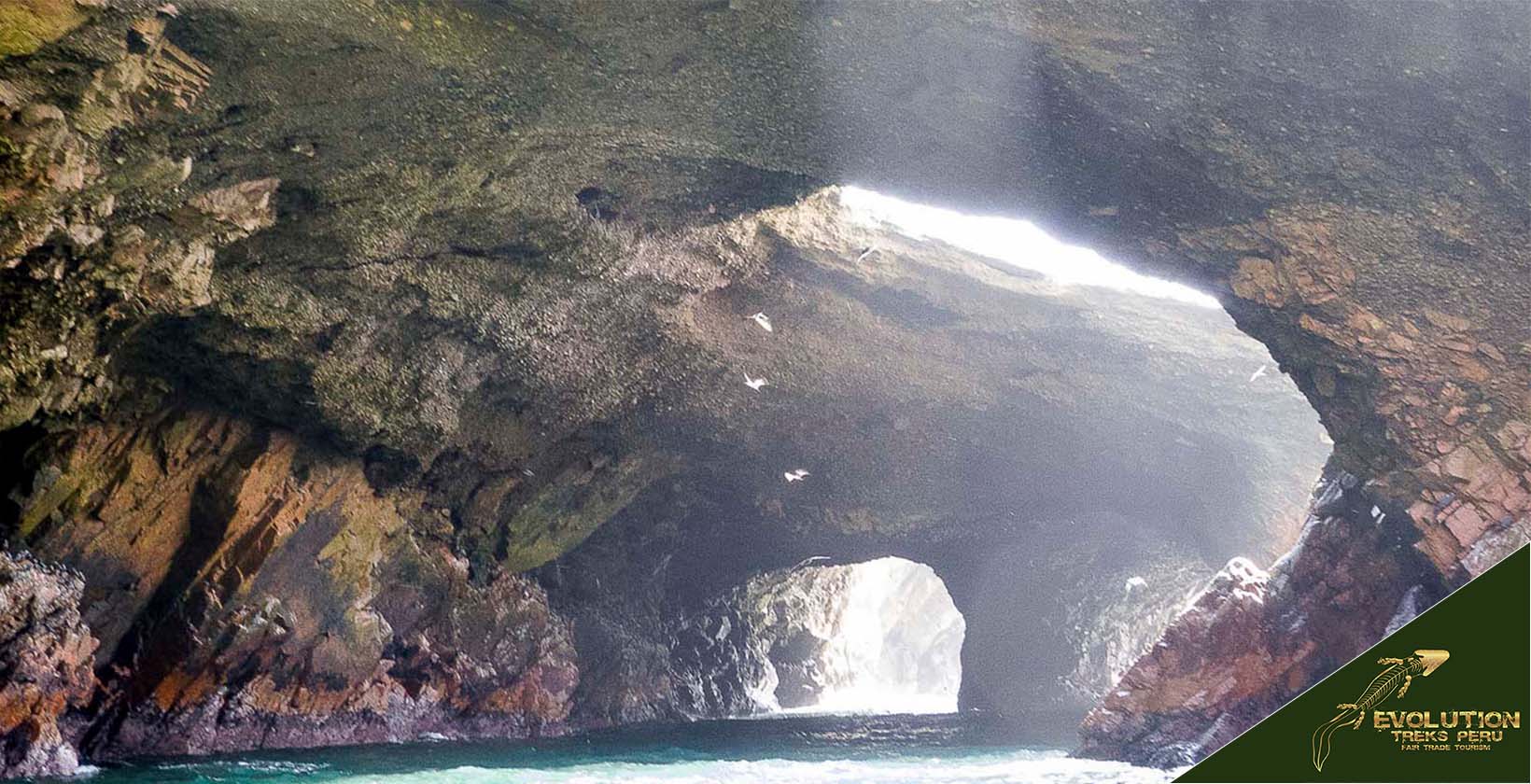
What are the myths of Las Ballestas?
The most important myth of the Ballestas Islands is the image emulating a candelabrum on a hill. This work was discovered by the German archaeologist Maria Reiche in the decade of the ’50s. This figure can only be observed from the sea because it is not visible from the land. It is a geoglyph drawn on the hillside that guides navigators. The author of the work is not known, but there are theories of its creation:
- The theory that the candelabra belonged to the Paracas culture, between 500 and 400 B.C., to orient themselves when they navigated to fish or to conquer territories.
- The theory that the candelabra was created at the time of the Spanish conquest and served as a landing signal for pirates.
- The theory that Don José de San Martín, liberator of Peru, carried out and is attributed to a Masonic origin.
The candelabra spans about 60 meters, and the drawn grooves have a depth of 1.20 meters. Despite the excessive wind in the area and the consequent movement of the sand, it has never been erased.
What is the contribution of Las Ballestas to tourism in Peru?
In 2020, before the pandemic, the economic contribution of the Ballestas Islands and the Paracas National Park was about 150 million soles. In addition, tourism growth doubled compared to previous levels in 2017. Also, by 2020, the tourism growth was almost 15% per year and a quarter of the 2000 people population of Paracas was substantially affected positively by such numbers. Economic growth was expected to seriously improve their lively hoods.
Are the Ballestas Islands important to the history of Peru?
The Ballestas Islands are very important to Peru’s islands as they have endured a unique relationship with Peru for hundreds of years. Historically known as “poor man’s Galapagos,” this spectacular archipelago was used by ancient Peruvians for ceremonial rites and spiritual devotion – later becoming an essential source of guano extraction during viceroyalties.
In the mid-19th century, it served as a remarkable hub of economic prosperity to Peru thanks to its exploitation; however, due to overexploitation and war turmoil against Chile in 1879–1883, that industry suffered significant repercussions. Nevertheless, beginning in 1989, when President Alberto Fujimori declared it part National Sanctuary, these islands off the coast of Pisco have recovered their essential importance within society today.
Where is Las Ballestas located?
The Ballestas Islands are located in the Pacific Ocean off the coast of Peru, in front of the National Reserve of the district of Paracas, very close to the province of Pisco, in the department of Ica. The islands are located about 260 km south of the city of Lima. The Ballestas Islands are located 7.7 km northwest of the Paracas peninsula, and 19 km as the crow flies from El Chaco, Paracas. North of Ballestas, 8.2 km, are the Chincha islands, and 10.17 km southwest of San Gallan island.
What are the coordinates of Las Ballestas?
The coordinates of the Ballestas Islands are 13°44’09S 76°23’47W. Its geographical coordinates are point 1 with a latitude of 13°41’51.81” and a longitude of 76°26’1.80”. Point 2 with a latitude of 13°41’53.42” and a longitude of 76°21’15.95”. Point 3 with a latitude of 13°46’26.10” and a longitude of 76°21’17.52”, and point 4 with a latitude of 13°46’24.48” and a longitude of 76°26′ 3.46”. An important fact is that the Ballestas Islands are formed by three islands of 560 m, 626 m, and 690 m in maximum length.
What is the map of Las Ballestas?

What is the geological profile of Las Ballestas?
The geological profile of the Ballestas Islands is formed by limestone rock in superimposed layers and, on them, hundreds of kilos of guano and seabird droppings that have been deposited over the years. Similarly, it has a maximum sand content of 88.63% located west of the northern and central Ballestas Islands, and is composed of calcareous particles (fragments of mollusk shells). A core containing up to 58.38% of sand was found west of the islands.
The minimum sand content was 10.59 % located to the east of the islands, along with values of 11 % and 12 % surrounding them as a strip to the north and west. In the Ballestas Islands, the highest silt contents (composed of fine sand and clay that makes mud together with mud and plant debris) were found in the extreme southwest (64.62 %) and north (63 %). The lowest silt content was 0.45 %, located in the shallow zone between the central and northern Ballestas Islands.
The clay contents increase as the stations move away from the islands; however, in the Ballestas Islands, there are higher contents in the whole area. The sediments surrounding the rocky bottoms of the Ballestas Islands, islets, shallows, and rocky elevations are made up of deposits of varying proportions of blocks, pebbles, gravel, and sand whose composition is lithic and biogenic (fragments of mollusk shells).
In the north, east, and southeast of the Ballestas Islands, there is an extension of silty clay sediments; in the southwest, there is mud, and in the northwest, clayey sand. There is 15% organic matter and 53.08% carbonates in the Ballestas Islands.
It should be noted that the Ballestas Islands have formed thanks to the eastern edge of the Nazca plate located in a subduction zone under the South American plate, which has given rise to the Andes mountain range and the Peruvian-Chilean trench. This process took millions of years, leaving along the Peruvian coast a series of elevations that became islands. A group of these elevations is the Ballestas Islands.
What is the best time to visit Las Ballestas?
The Ballestas Islands can be visited all year round. Tourist services offer the same, both in summer and winter.
What is the climate like in Las Ballestas?
The climate of the Ballestas islands is generally moderate and mild, with temperatures rarely reaching extremes. During summer, the temperature range hovers around 19-21 degrees Celsius (66-70 degrees Fahrenheit), while during winter, it drops to an average of 8-14 degrees Celsius (46-57 degrees Fahrenheit).
The islands are relatively humid, with annual precipitation levels of up to 300mm (12in). This humidity, combined with the proximity to the ocean, creates a unique microclimate that can sometimes be quite windy and foggy.
The climate in the Ballestas islands has minimal seasonal variation. However, there are some noticeable differences between seasons. During the summer months, days tend to be warmer and more prolonged than in the winter months. The nights in summer also remain relatively warm compared to wintertime, where temperatures drop significantly at night. Also, there are more hours of daylight in summer than in winter.
The Ballestas Islands experience two distinct rainy seasons – one at the start of spring and one at the end of autumn – which bring higher levels of humidity and rainfall than average. Winds generally blow from the east or southeast direction, moderating temperatures throughout the year.
These winds also bring a refreshing mix of air from both land and sea, which helps keep temperatures pleasant year-round. Fog is also common during certain times of the year due to wind blowing moisture onto the islands from over the sea.
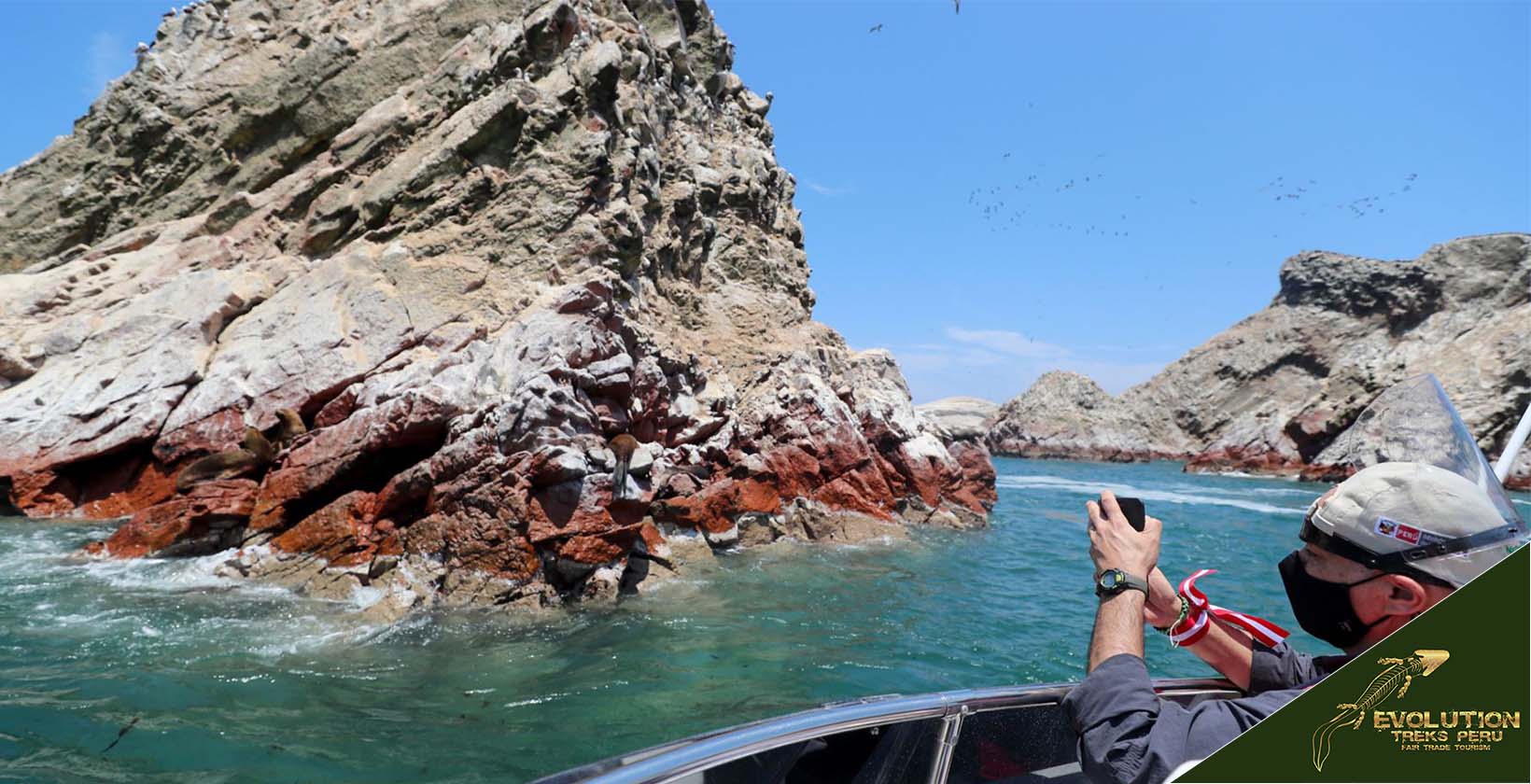
Where to stay in Las Ballestas?
Accommodations for the Ballestas Islands are diverse. Hotels and rooms for rent are in Paracas (in front of the islands). Some options are:
- Nuevo Paracas condominiums feature ocean views: an outdoor swimming pool, a garden, a private beach, and a barbecue area. It offers free Wi-Fi and free private parking. The accommodations feature a sofa, a seating area, a flat-screen cable T.V., a well-equipped kitchen with a dining area, and a private bathroom with a hairdryer. Towels and bed linen are provided. It has good reviews from its visitors. Guests are required to pay a $100 deposit upon arrival to cover any damages that may occur. This deposit is fully refundable upon check-out and is subject to inspection by the property. For stays in summer or key holidays, such as Easter, national holidays, New Year’s Eve, and similar, a 20% deposit is required to make the reservation. The cost of accommodation is 950 soles or, at the exchange rate, US$250 per person.
In the area of El Chaco, the starting point for the Ballestas Islands, there are several lodging options:
- The Gran Palma Hotel is close to local attractions and dining options. It has three stars and a restaurant, massage service, and spa, costing $70 per night for two people.
- Los Frayles Hostel on Paracas Avenue has Wi-Fi, an outdoor view, laundry service, and transportation. The cost is US$30 per night, including a double bed.
- The 4-star San Agustin hotel has an outdoor pool, Wi-Fi service, gym, game room, and cafeteria for $124 per night.
- Aquamarine Beach Hostal offers airport transfers, tours, and family rooms, starting at $30 per night.
- The Kokopelli Hostel Paracas has a 24-hour reception service, pets allowed, a shuttle service, an outdoor pool, a games room, and luggage storage. This hostel costs US$20 per night.
- The 4-star DoubleTree Resort (Hilton) offers an outdoor pool, gym, spa, bar, air conditioning, and restaurant. A night’s stay costs 820 soles at the exchange rate of US$215 per day.
What are the Tours for Las Ballestas?
The following is a list of the most important tours in the Ballestas Islands.
- Boat tours: The most popular way to visit the Ballestas Islands is by boat. These tours typically last around 2-3 hours and offer views of the islands, wildlife, and sea caves. Alternatively, one can tour Paracas beach on the traditional fishing boats, known as “caballitos de totora.
- Combination tours: Some tour operators also offer combination tours that include visiting the Ballestas Islands and other nearby attractions such as the Paracas National Reserve or the Paracas Candelabro.
- Private tours: They usually include personalized tour packages tailored to the interests of the visitors. Usually, these private tours involve visiting the Ballestas islands, the Paracas National park, and the Huacachina dunes.
What things to bring to Las Ballestas?
- Below is the lsit of things you need to bring to the Ballestas Islands
- Windbreaker
- Sunglasses
- Hat
- sunscreen
- camera, or cell phone for taking pictures
- and not to have eaten one hour before the tour.
What are the closest destinations to Las Ballestas?
The closest destinations to the Ballestas Islands are:
- The Paracas National Reserve offers great biological diversity, such as birds, mammals, and fish. You can enjoy beach tourism and adventure activities such as paragliding.
- Inside the Reserve is the Julio C. Tello Museum, which displays 121 pieces, including ceramics, textiles, and utensils from the Paracas culture (700 B.C. – 200 A.D.). It has a room with a projection of audiovisual material and a Temporary Exhibition Room.
- Near the Ballestas Islands, you can observe the geoglyph El Candelabro, whose origin is unknown, and that time has not been able to disappear. On the other hand, there are numerous beaches of great beauty.
- The city of Ica has the Nazca lines, a set of geoglyphs of animal, human and geometric figures totaling some 300 images in the desert dating from pre-Columbian times and of unknown origin. These lines can be observed through a flight over them.
- The Huacachina Lagoon is an oasis in the middle of the desert where you can walk through the existing dunes.
- Ica is home to the oldest wine estate in South America, which also produces Pisco, Peru’s emblematic liquor.
- The regional museum Maria Reiche is the house where the German researcher of the Nazca lines lived.
- An interesting tour is the pisco route, where you can appreciate the drink preparation process.
- The Inca settlement Tambo Colorado is a sample of the presence of the Incas on the coast of Peru.
- The regional museum of Ica “Adolfo Bermudez Jenkins” surprises with its archaeological pieces of the Paracas culture.
- The Cahuachi ceremonial center, the largest mud ceremonial center in the world made with adobe pyramids by the Nazca people (200 BC to 450 AD).
- The Antonini museum, where you can appreciate the archaeological pieces found in Cahuachi belonging to the Nazca culture, such as textiles, funeral bundles, trophy heads, and musical instruments.
- San Fernando National Reserve is located in the district of Santiago in the province of Ica and the province of Nazca in the department of Ica. San Fernando National Reserve is comprised of two very different sectors. To the north, an accessible zone, formed by the mouths of the Ica and Grande rivers, which adorn the great Ica desert. There are also some beaches. The southern part includes the San Fernando inlet, the coastal hills, and inaccessible cliffs. The Huasipara hill is the highest on the Peruvian coast (1790 m.a.s.l.). The San Fernando inlet is unique in the country. It is made up of two peninsulas that project into the sea and are close to each other, parallel to each other, with a large islet in the center. It gathers a vast marine biological diversity with sea lions, otters, penguins, and cetaceans; it also presents typical fauna of the highlands, such as guanacos and condors that descend near the sea. It is the second reserve with a protected natural area after the Paracas National Reserve. The climate is very warm, reaching temperatures between 26 – 34 °C in summer and 16 – 26 °C in winter. Finally, there is the Cerro Blanco, the highest dune in the world at more than 2000 m.a.s.l. where you can practice sports such as sandboarding.
How to get from Lima to Las Ballestas?
Below is a list of how to get to the Ballestas Islands from Lima:
- Take a public bus or drive. The bus journey from Lima to Paracas, the closest town to the islands, takes about 4 hours and operates daily with several companies. Cruz del Sur is the most reliable company to take for your travels. Alternatively, if you prefer to drive, it would only take around 3 hours by car from Lima.
- It is advisable that once in Paracas, you stay overnight as tours to the Ballestas Islands usually start early in the morning. There are plenty of places to stay, ranging from budget-friendly hostels to luxurious resorts depending on your preferences.
- Book a tour around with one of the several tour operators in Paracas offering different packages so that you can design your own experience according to your interests.
- Return to Lima: After visiting the Ballestas Islands, you can return to Lima by bus or car. If you have more time and want to explore more of the region, you can visit the Paracas National Reserve or continue to Huacachina or other nearby attractions.
What to know before going to Las Ballestas?
Before arriving at the Ballestas Islands, you should know that it is in a protected area and the only way to access the place is by boat; you can not walk on the islands or swim. All tourists must wear life jackets, and the boats have a guide service. The best weather is from January to March, and in the remaining months of the year, the temperature drops, and there may be no visibility when there is fog.
What is the itinerary of Las Ballestas?
The itinerary to the Ballestas Islands is as follows:
- Start 7:45 a.m. in the district of Paracas. You can go directly to the port of El Chaco, or some tour services include picking up tourists from your hotel or bus station.
- Then, at 8:00 a.m., passengers are loaded onto the boats after putting on their life jackets.
- Once the group is ready, we sail through Paracas Bay, passing by the San Martin port, Pejerrey point, and Colorada point, which have beautiful landscapes.
- After a few minutes, the boat will approach the geoglyph “El Candelabro,” where the boat will stop for the guide to explain the probable meanings of this image and take pictures.
- Later, you will notice that the boat moves away from the coast and approaches the open sea, seeing “El Boquerón de Los Perdidos,” where you can see Tortuga Point. To the south, you can see San Gallan Island, and to the north, the Chincha Islands.
- After 15 minutes, you will arrive at the Ballestas Islands. Minutes before arriving, flocks of birds will welcome tourists accompanying the boat until you reach the Ballestas Islands. Upon arrival, the boat will slow down to a minimum speed to approach the rock formations, home to many sea lions and birds of various species. The guide service will answer tourists’ questions and explain the beautiful scenery in detail. The boat gets very close to the Ballestas Islands, allowing you to take excellent pictures and videos. After the tour to the islands, we return to the Paracas Bay. Sometimes dolphins are observed swimming near the boat; in those moments, the boat pauses to enjoy the moment, and then we start our way back to Paracas.
How much does it cost to visit Las Ballestas?
The cost of visiting the Ballestas Islands depends on the service the tourist wants. The tour price for the tour is 40 soles per person, and on holidays, the cost of the tour varies to 50 soles. In addition to the tour payment, a tax of 16 soles per adult person must be paid; in the case of children, the fee is eight soles per child and includes children from one year of age. Younger children are not allowed on the tour. The total cost of the tour plus taxes is 56 soles, or approximately 15 dollars.
If pick-up services from the hotel or transfer from the bus station are desired, they have an additional cost depending on the tour company that the tourist hires. For example, through the private dock of the hotel Paracas, a luxury collection resort embarks with a maximum of 22 people per boat.
The boat has an engine that minimizes vibrations and splashes, offering a wide angle of vision. It has constant radio communication, emergency supplies, and trained personnel. The cost of this tour to the Ballestas Islands is 125 soles, or approximately 32 dollars.
Another service is pick up at a hotel where tourists stay in the district of Paracas or at the bus station where they arrive and includes a visit to the Paracas National Reserve. The cost is 200 soles per person or 52 dollars, including all tickets and taxes.
The price on holidays is 250 soles per person or US$65. Finally, Angel Desert Tours offers a full-day tour in Paracas and Ica that includes the Ballestas Islands, the Paracas National Reserve, the El Catador Pisco, and wine cellar, the hamlet of Cachiche, the Huacachina, sandboarding practices in Ica. It includes the pick up of tourists from a hotel or the Cruz del Sur bus station and the return service; the price covers the tickets to all the tourist sites, taxes, and the guide. The cost is 390 soles or approximately 100 dollars.
What is the best vehicle to visit Las Ballestas?
The best vehicle to visit the Ballestas Islands is by land and is given from the city of Lima to the district of Paracas, province of Pisco, in the department of Ica. The company Cruz del Sur has different services ranging between 60 and 70 soles with seats with an inclination of 140 to 160 degrees, with Wi-Fi connection.
The stations are located on Avenida Javier Prado in the district of La Victoria, and the buses are two levels or floors.
In the PeruBus company, the ticket costs 35 to 50 soles, and it has seats with 140 degrees inclination and Wi-Fi service. The agency is located in Avenida Mexico, in the district of La Victoria. There are no flights to Ica or Paracas, and the trip in both companies from Lima to Paracas is 4 hours. Buses depart with a frequency of 2 to 3 trips per day.
How many hours should a person spend in Las Ballestas?
The tour of the Ballestas Islands lasts approximately 6 hours. It is recommended that tourists take two or three days to visit the Paracas National Reserve and all the attractions of the department of Ica.
What animals live in Las Ballestas?
The animals that live in the Ballestas Islands are diverse. Within the Paracas Reserve, there are 1543 species of flora and fauna, 216 species of birds (migratory and native), 19 species of mammals, 52 species of fish, and six species of reptiles, as well as migratory and endangered species.
The fauna of the Ballestas Islands is represented by:
- The Humboldt penguin, the child bird, lives in colonies and rocky areas.
- The Peruvian pelican, or gannet, also produces guano.
- The Peruvian booby.
- The red-footed cormorant.
- The guanay is in the process of extinction; this species has this name because it is the main producer of guano or fertilizer.
- The red-footed turnstones nest in Canada and arrive on the Peruvian coast between October and April.
- The plover of the breakers.
- Franklin’s Gull comes from the United States and Canada to nest on the coast in the spring and summer.
- The Peruvian gull, a medium to large bird, can be seen in Chile, Ecuador, Panama, and the Falkland Islands.
- The Dominican gull,
- The gray-colored, red-legged Tern.
- The marisquero churrete, the only species that lives exclusively on the marine shores, in the same way flamingos are found.
- The condor (seen infrequently).
- The sea cat, an otter that dives in the depths of the sea, is located from the province of Chimbote (north coast) to the Argentinean Atlantic coast.
- The bottlenose dolphin is the most common dolphin and lives all over the world.
- The bufeo, the sea lion, the most common sea lion, who swims and rests in the Ballestas Islands and has a male population of preponderantly and can be found in the Pacific and Atlantic oceans, as well as the fur seal.
- Blue whales.
- The minke.
- The fin whale.
- The right whale.
- Sperm whale.
The sea of the Ballestas Islands has plankton and microorganisms that feed a variety of fish such as toyos, anchovetas, corvinas, bonitos, tramboyos, rays, sardines, cheetahs, groupers, pampanitos, lornas, jacks, lizas, silversides, and soles.
You can also find reptiles such as lizards, sea turtles, green and hawksbill turtles, seahorses, octopuses, clams, different types of crabs, sea urchins, stars, sponges, ascidians, anemones, and sea slugs. There are red algae meadows.
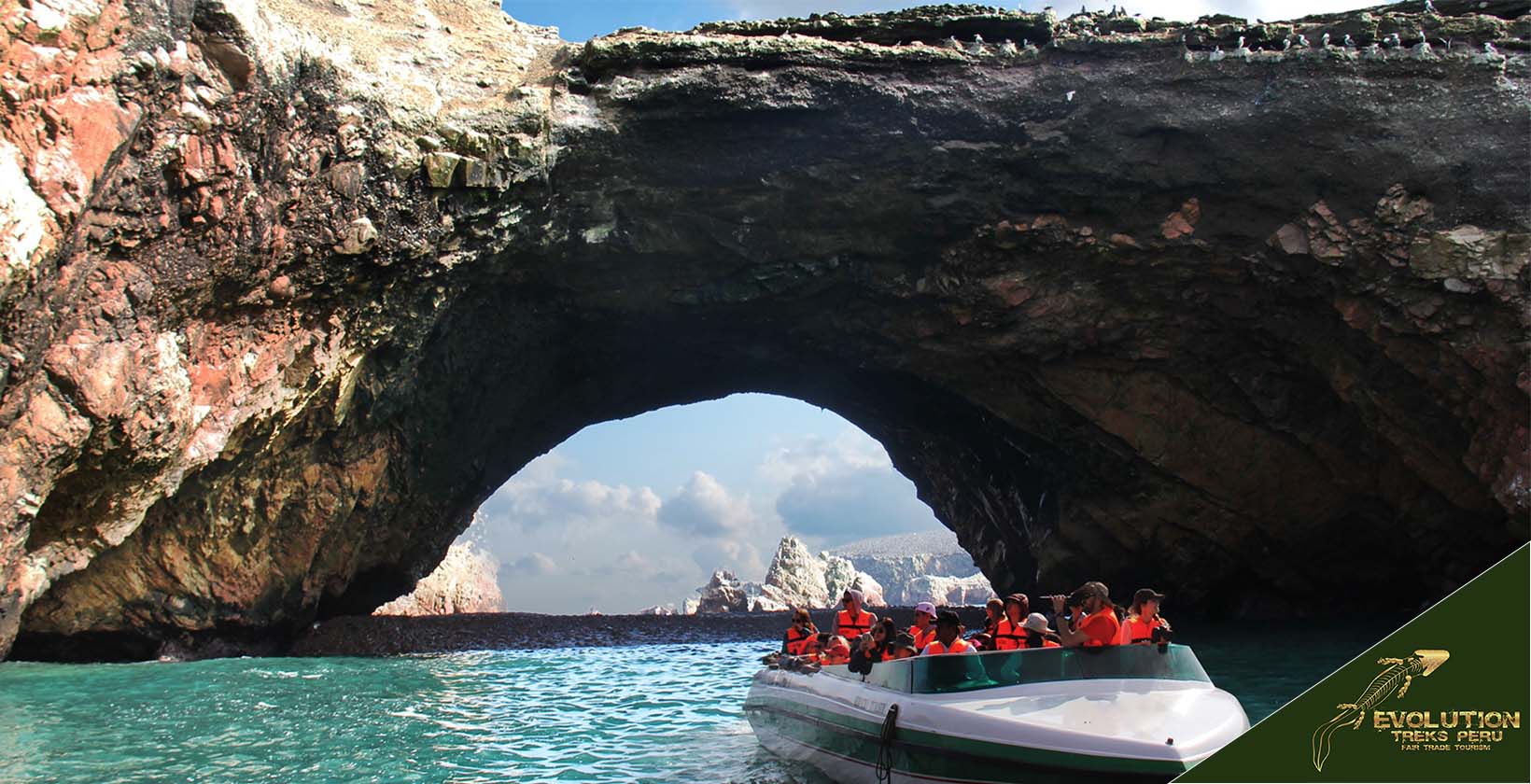
What is the closest city to Las Ballestas?
The Ballestas Islands are located near Pisco, the capital of the province of Ica, in front of the National Reserve of the district of Paracas. The Ballestas Islands have been formed since ancient times by the movement and currents of the Pacific Ocean. Consequently, there was no city on them, however, there are theories that they were places to worship the dead, human sacrifices, and religious and commercial activities such as the extraction of guano, which at the time of the Inca empire was already considered the best fertilizer. As time has passed, the islands have been a refuge for pirates and smugglers, as well as places of indiscriminate extraction of bird excrement (guano) during the 19th century.
What books are there about Las Ballestas?
- There are books about the Ballestas Islands, such as:The Compendium of research Ballestas and Chincha Islands: National Reserve System of Islands, Islets and Puntas Guaneras, by Ricardo Jimenez, from the publishing house Terra Nuova, from the year 2019.
- Participation and conservation for the sustainable management of Ballestas Islands and Chincha Islands: contributing to the integration and articulation of social actors for the strengthening of management in Ballestas Islands and Chincha Islands, of the same year and by Elvis Sergio Peralta Roldán and Antonio Galdós Veliz.
- La Historia Marítima del Perú: los puertos del Perú (volume 1) by Miguel Florez Nohesell (1986); La Historia Marítima del Perú siglo XVI (volume 2) by José Antonio del Busto; from the Instituto de Estudios Marinos del Perú.
- Anchovies, birds, and fishermen in the Peru Current by Stamford, Sinauer.
- Guano birds and the ‘El Niño’ phenomenon by Tovar, H., and Cabrera. D. (1985). Bol. Inst. Mar Peru.
There are studies on the fauna of the Ballestas Islands, such as:
- The Fauna Guide, produced by the Servicio Nacional de Áreas Naturales Protegidas por el Estado and the Reserva Nacional Sistema de Islas, Islotes y Puntas Guaneras.
- Baseline of the Ballestas Islands pilot site: Fishery resources, by IMARPE (Instituto del Mar del Perú).
- Aves marinas en las Islas Ballestas y Chincha, GEF-UNDP Perú, 2013, by various authors: Goya Sueyoshi, Elisa; Cardich Manrique de Lara, Carolina; Llapapasca Lloclla, Miguel; Márquez Manrique de Lara, José Carlos; María Andrea Meza Torres and Rivadeneyra Villafuerte, Sofía.
- The report Marine mammals in the Ballestas and Chincha Islands, GEF UNDP Peru, 2013, by authors Goya Sueyoshi, Elisa; Aguilar Arakaki, Regina; Cardich Manrique de Lara, Carolina; Llapapasca Lloclla, Miguel; Márquez Manrique de Lara, José Carlos; María Andrea Meza Torres and Delia Vega Valencia.
- Tortugas marinas en las islas Ballestas y Chincha, GEF UNDP Peru, 2013 by Paredes Coral, Evelyn; Quispe Cayhualla, Sixto y Quiñones Dávila, Javier.
Who are the scientists who worked at Las Ballestas?
The following is a list of the most important scientists that worked in the ballestas islands.
In 1615, the chronicler Guaman Poma de Ayala drew the port of Pisco, where the Ballestas Islands are located.
- The historian from Iquique, Dr. Alberto Casa Vilca, located mummies with wooden tools, among which are the oars in which, according to the theory proved by the Norwegian explorer Thor Hayerdal, the primitive Peruvians traveled to Oceania.
- The Peruvian historian José de la Riva Agüero y Osma, in his work “Nicolás de Ribera y su posteridad,” notes four rebellions in the Chincha, Pisco, and Nazca Valleys, led by the Curaca of Ica.
- The historian from Ica, Joaquín Luna Victoria published research texts in the newspapers of the beginning of the 20th century. The conqueror of Peru, Francisco Pizarro, called the Cabildo de Los Reyes, Ribera (founder of Ica), and the Curaca, and making him place his right hand on the cross of his sword, they celebrated an alliance of peace between Spaniards and natives for a greater smoothness in the treatment and the payment of the tributes.
- The archaeologist and anthropologist Julio C. Tello, father of Peruvian archaeology, researched the Paracas culture, finding collections in the cities of Ica and Pisco. At the beginning of the 20th century, researchers excavated in all of Peru except the southern coast (Mejia 1950; Rowe 1959).
- In 1901, the German archaeologist Max Uhle directed excavations at the Ocucaje hacienda in the Ica valley. His work at Ocucaje allowed him to establish the existence of a pre-Tiahuanaco (Nasca) culture on the southern coast (Uhle 1903: 784). Tello and Lothrop, from the American Indian Museum in New York, made an initial inspection of the 54 hectares that comprised the beach of Arena Blanca and Cerro Colorado. These two sites are referred to in the literature as Paracas.
- In Arena Blanca, they found elongated and deformed skulls in a necropolis called Cabeza Larga (Tello 1928: 682). Pre-Nasca remains were found at Cerro Colorado and Paracas or Arena Blanca (Tello 1928).
- During March 1926, four more burial bundles were found in Arena Blanca by the team of the Peruvian Archaeological Museum. The objects discovered showed a simple lifestyle dedicated to fishing and gathering seafood. Within the evolution of this pre-Inca culture, famous textiles were found, which have been classified within the Necropolis stage. Other pieces of great value were found, such as ceramics and funerary bundles.
- The Peruvian Navy and the Instituto de Mar del Peru are the entities in charge of investigating the state of the Ballestas Islands.
What are the sample artifacts from Las Ballestas?
- Tissue found in Paracas, very close to the Ballestas Islands.
- Vessels and ceramics found in burial bundles.
- Decorated Paracas ceramic bottle. Early Horizon Period (1,000-100 B.C.)
- Pre-Hispanic skulls from Paracas.
- Reconstructed funerary burials (bodies seated in the fetal position).
What are the facts for Las Ballestas?
The most important facts to know about the Ballestas Islands are:
- Buy the tickets in advance to avoid setbacks.
- If the tourist departs from Lima, they must take the bus at 4:00 a.m. in order to access the two tours offered daily in the Ballestas Islands. It is only possible to access Lima by land.
- The season of greatest sunshine and clear skies is from January to March; in the remaining months of the year, there may be fog and hinder the view of the beautiful scenery offered by the islands. It is advisable to bring a windbreaker sweater, U.V. protection, sunglasses, a camera, and a cell phone to capture images. It is recommended not to eat one hour before the tour because the swaying of the boat may cause nausea.
- The tour has a total cost of 56 soles or 15 dollars, including taxes.
- Tourists must wear a life jacket before the boat departs. The loan of this accessory is included in the ticket.
- The duration of the tour is two hours.
- There are other tours that offer additional services, such as pick-up at the lodge and other tours near the islands.
- The Ballestas Islands are a protected area, so swimming is not allowed.
How is the past of Las Ballestas presented to visitors?
Visitors to the Ballestas Islands will feel comfortable and safe from the moment they arrive at the Chaco dock. The scenery is cheerful, motivated by the sun, the rock formations, and wildlife sightings. Visitors can closely observe the activity of sea lions and other species.
The guide service explains that the islands have been part of Peru’s commercial activity since guano birds produced a natural fertilizer and brought bonanza to the country in the mid-nineteenth century. Currently, the extraction of this resource is done every eight years.
The Ballestas Islands are within the space of the Paracas culture, a pre-Columbian culture that produced textiles and ceremonial objects. The place where the islands are located was a place for religious activity and expressions, such as the cult of the dead and human sacrifices. The Ballestas Islands and its surroundings are a place full of history.
How is the conservation of Las Ballestas?
The Ballestas Islands are located in an area protected by the Peruvian government and can only be visited by authorized tours. Tourist companies have the permission of the Port Captaincy of Pisco. The Humboldt Current, the most important in the world, passes through these islands.
The mixture of its waters regulates the temperature of the planet and its climates. The current carries nutrients to feed the animals in the form of plankton. The presence of bird droppings or guano also prevents tourists from disembarking from the boats.
Is Las Ballestas a UNESCO World Heritage Site?
The Ballestas Islands have been a UNESCO World Heritage Site since 1994 for the diversity of their fauna and for being the home of sea lions where birds and other marine species are concentrated.
Is it worth visiting the Ballestas Islands?
Visiting the Ballestas Islands is essential to know the marine species in their habitat. The Ballestas Islands is a protected place that has been preserved over time and shows the beauty of nature without manipulating man; it is also a place of great attraction at a low cost without major risks for the visitor.
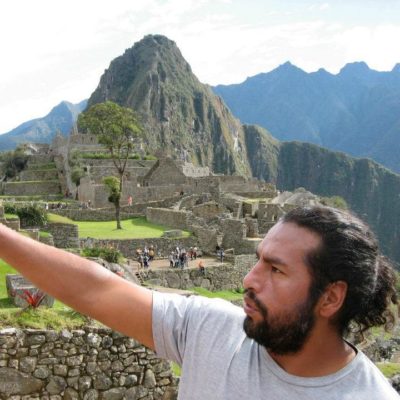
Miguel is a professional tour guide from Cusco, Peru, with almost 20 years of experience leading tours and a deep knowledge of Peru’s cultural and ecological diversity. He is also an advocate of ecotourism and cultural sensitivity and has lectured on these topics in the US and Europe. He co-founded Evolution Treks Peru, a worker-owned travel company based in Cusco.
